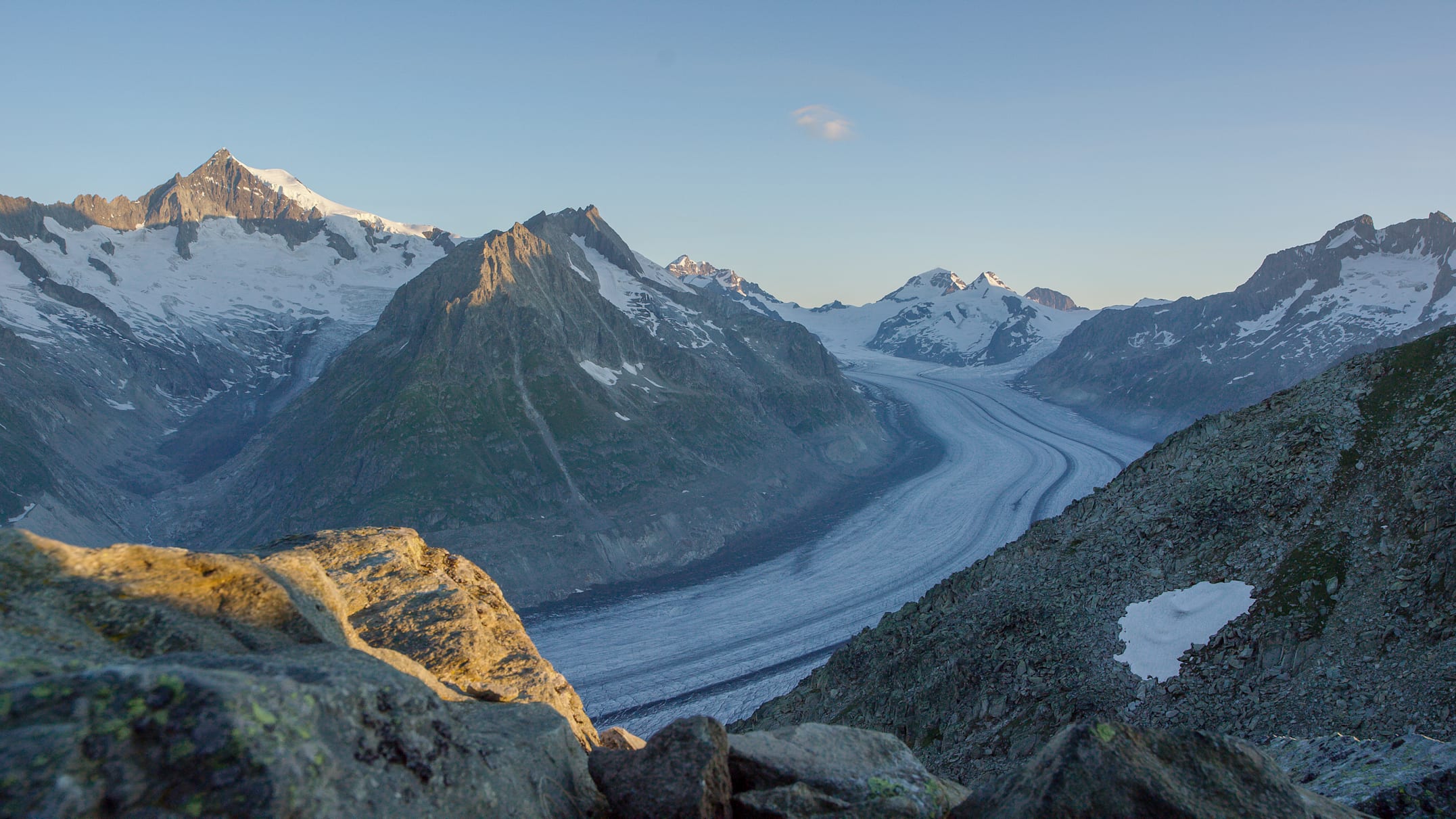Research has also benefited from its retreat. Where the Great Aletsch Glacier has retreated, it has repeatedly revealed witnesses to its history: trees, for example. Some of these date back to the Bronze Age (circa 1300 B.C.). Together with historical documents and measurement data, scientists have been able to understand when the glacier grew and receded over the past 3,500 years. This data gives us clues about the climate of the past. And they help us to put today's global warming in perspective.
